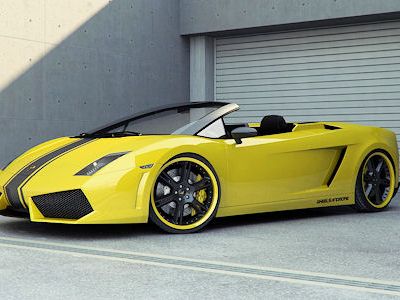
Ferrari. A name that is synonomous with winning. Over 50 years of racing heritage; a heritage which includes several Formula One titles, as well as overall victories in Sports Car Racing at some of the most difficult race circuits known to exist. Tracks like Spa, the Nurburgring, and the great French classic held every year at Le Mans. Nearly every challenge the Prancing Horse of Maranello has undertaken in the last 60 years has resulted in victory. One series however was not intimidated by Italy's best. That series was the Can-Am Challenge, held between 1966 and 1974 in North America. The Can-Am, as it would become known, was perhaps the most exciting road racing series the planet has ever seen. Governed by the Sports Car Club of America, the series was run in accordance to the FIA's Group 7 rules for Sports Racing Cars. Group 7 rules were rather unlimited in many ways, which led manufacturers of all levels to run free with creativity and build some of the most technically advanced cars of their time.

In 1966, the Can Am's first actual season, the European factories had little interest in a series that only lasted from September to November and was comprised of just six events. Most of the entrants were independent teams. Teams like McLaren and Surtees, both headed by Formula 1 Champions that saw the Can Am as an opportunity to build their reputations as manufacturers. Ferrari already possessed a championship winning reputation. However, a young Mexican driver by the name of Pedro Rodriguez would fire Ferrari's first shot in what would soon become the hottest road racing series on the planet.
Bridgehampton, New York was the second round of the inaugural Can Am Series. The 2.85 mile course located in eastern Long Island would be the first time that a Ferrari would race in a Can Am event. Pedro Rodriguez was entered in a Dino 206S Coupe that September weekend. The young Mexican driver was able to achieve 22nd position on a grid filled with open-top sports racers powered by thundering American small block V-8s. The race would result in the little Ferrari not finishing due to the loss of a wheel. Rodriguez would appear again at Laguna Seca with the Dino, this time with a 18th place overall to show for his effort.

By early 1967, the Can Am was already being viewed as a fabulous series by many of the top names in North American road racing. The series caught the attention of Luigi Chinetti, the man at the helm of N.A.R.T. (North American Race Team), Ferrari's factory-backed team of choice in the United States. Chinetti would send one of N.A.R.T.'s P3/4 prototypes back to Maranello early in 1967 for modification to run in that year's Can Am Series. While at the factory, the P3/4 would receive several modifications to assist it in moving from Group 6 to Group 7 rules. The car was lowered and lightened, though the headlamps were retained. Provisions for a boot and spare wheel were eliminated, as there were no need for such luxuries in Can Am racing. The P3/4 also received a strengthened roll bar.
Ferrari's would be absent at the opening race held at Elkhart Lake, Wisconsin in 1967. Though Chinetti and the N.A.R.T. team would arrive for the season's second race at Bridgehampton. Lodovico Scarfiotti was selected to drive the P3/4 that September weekend and he achieved a grid position of 16th place. Scarfiotti, a Formula 1 veteran, would go on to drive the P3/4 to a 7th place finish in the race.
Scarfiotti would again pilot the P3/4 a week later at Mosport, one of the fastest tracks the Can Am Series raced at. The N.A.R.T. P3/4 would start from the 12th position on the grid. The weekend would result in a DNF for the Ferrari due to a crash.

The fourth race of the 1967 Can Am season was to see the most powerful sports cars in the world visit the beautiful Laguna Seca Raceway on the coast of Central California. This race would mark the appearance of two new Ferrari Can Am cars in the form of P4s. Now equipped with full glass-fibre bodies, a huge rear spoiler, and a larger 4.2 litre engine, it looked like there was a serious effort brewing from Italy's top name in racing. Chris Amon and John Williams were recruited to perform the driving duties. Amon, being the seasoned driver he was, performed well at Laguna Seca driving the number 23 Ferrari P4 from 16th on the grid to a 5th place finish. Williams also scored well on the weekend by completing 99 laps and capturing 8th place. Two weeks later, at Southern California's incredible Riverside Raceway, the Amon and Williams duo would again attempt to bring victory home for Maranello. This time the results were not as promising as Laguna Seca, with Amon finishing 3 laps down in 8th place and Williams crashing out. The final Can Am event of 1967 was held at Las Vegas. A dusty track in the Nevada desert, Vegas was known for wreaking havoc with both racers and their machines. Amon would put the P4 in 13th place on the grid, while Williams scored the grids 18th spot. Williams race was short, as a stone was ingested on lap 1, locking the throttle and leading to the retirement of the number 27 Ferrari. Amon would wind up with a DNF as well due to a crash. Despite mid-pack qualification times, the P4s proved capable of obtaining podium results.


















 2007 Cadillac STS -
2007 Cadillac STS - 2005-Cadillac-STS-Dashboard-
2005-Cadillac-STS-Dashboard- 2008 Cadillac STS Detail UK.
2008 Cadillac STS Detail UK. Cadillac 'Ass'TS
Cadillac 'Ass'TS Auto Show, Cadillac, STS
Auto Show, Cadillac, STS Cadillac STV V 2006
Cadillac STV V 2006 Continuing Cadillac's
Continuing Cadillac's





